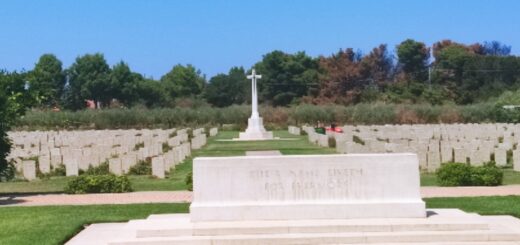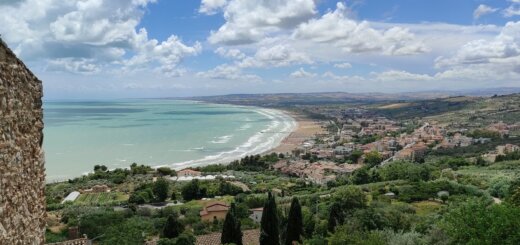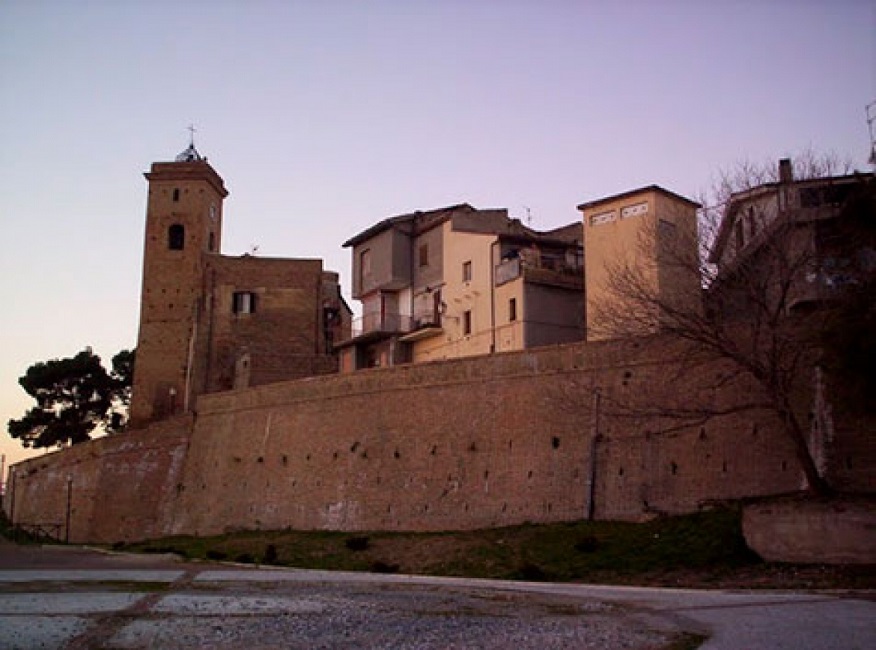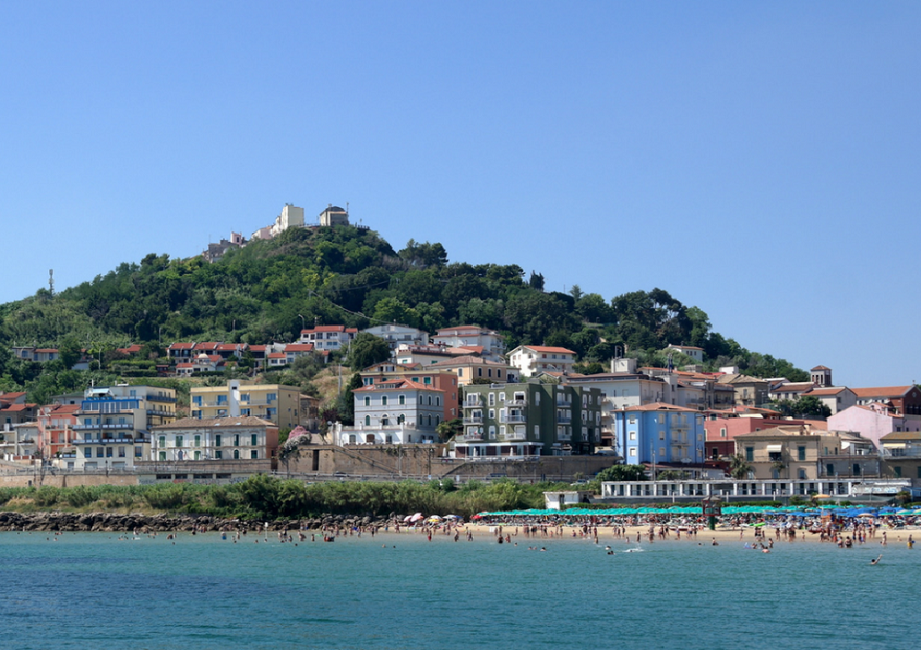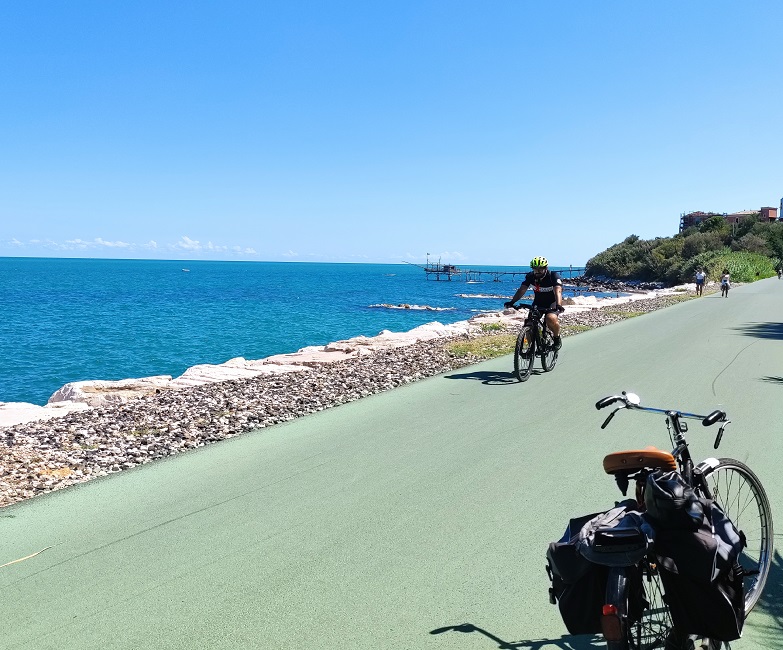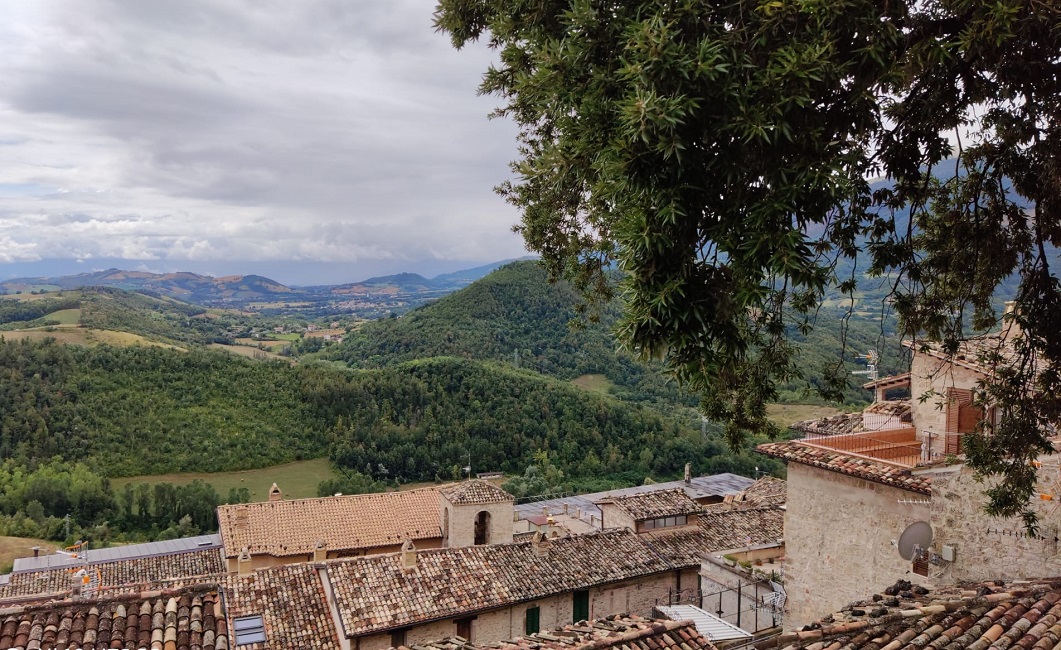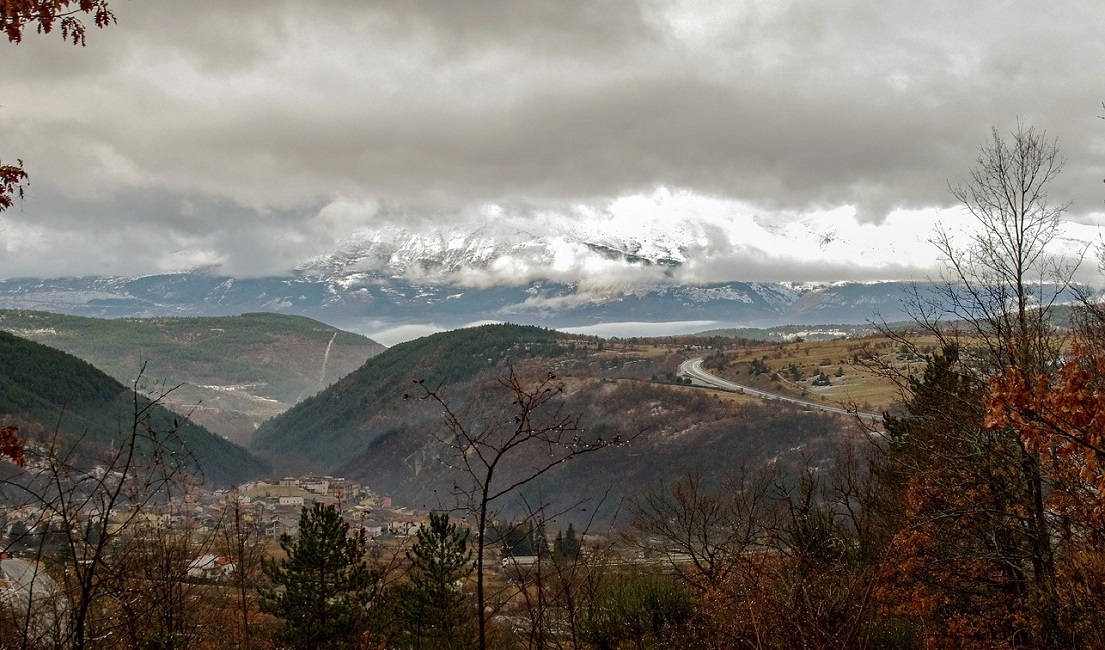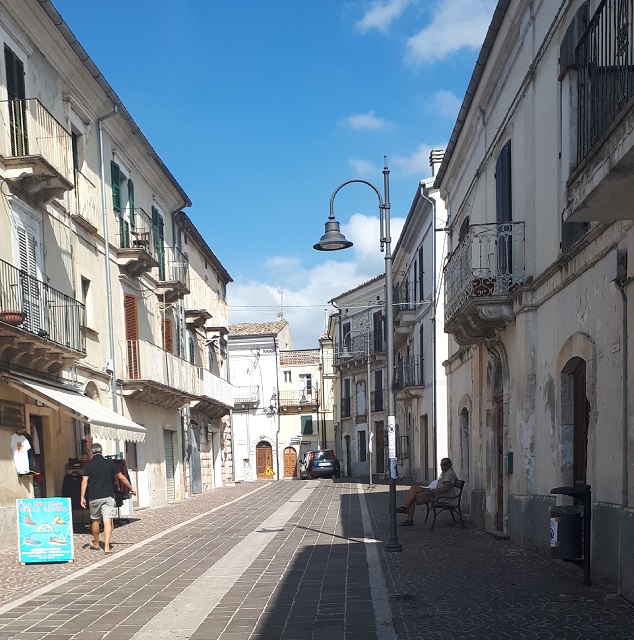Montepagano
A pagan-sounding place and a bed-warming priest
Up on the hill overlooking Roseto we spy a dome-like structure and decide to investigate. The signs along the road say Montepagano. The countryside, as we climb, opens out in a verdant expanse towards the Majella and Gran Sasso, each with a lingering mantle of snow.
We find a silent village. It is too early for the tourist season, when holidaymakers will drive up from the coast, animating the streets and squares and filling the few cafés and restaurants.
For now, the bars are empty. Help yourself, says the friendly owner of one. So we do. We carry our drinks out to the terrace and survey a deserted piazza.
It’s hard to imagine that this sleepy village was once the main town. Roseto, seven kilometres down below, was just a frazione, or hamlet, though the other translation, fraction, sums it up neatly. Pardon the pun.

A change of fortune
It was Mussolini who, by royal decree in 1927, made Roseto the capoluogo and from then on the fortunes of each place were reversed, Montepagano declining as Roseto flourished and grew.
The name Montepagano makes me think that something not-quite-Christian went on in these parts but the original Latin meant simply ‘village on the hill’. It originated as a stronghold against possible Turkish invasion and it’s easy to see why. From this village on the hill you can see forever – across the sea, up and down the coast, and inland as far as the mountains. Montepagano was later ruled over by the ubiquitous Acquaviva family of Atri, whose tentacles of power reached far and wide over Abruzzo in medieval times.

The medieval gates
It doesn’t take us long to explore. The most interesting sites are the traces of the medieval walls which can still be found near the ancient gates. There is the Porta da Borea, facing north, the Porta da Piedi, the east gate and my favourite, with its lookout over the Adriatic, and the Porta da Sole, the Sun Gate, with a vista that sweeps from the sea to the Gran Sasso. Everything is neatly signposted.

The dome we saw from below turns out to be part of the Chiesa dell’Annunziata. There is also an iconic bell tower without a church, the latter having crumbled long ago.
Inscribed on stele on the village walls are poems by a contemporary artist living locally. The painstaking care with which these have been inscribed and mounted testifies to healthy cultural interests of the sort that often thrive in small communities like this one, where distractions are few.
Montepagano has, it turns out, bred and exported some formidable talent. Proudly displayed posters of the internationally acclaimed musical group Il Volo remind us that one third of the trio grew up here.
The Civic Museum
We are just about to leave town when we spot the civic museum and decide to give it a once-over. Inside we find an overwhelming assortment of objects. Here are the memories of a community, crammed higgledy-piggledy into a series of small rooms.
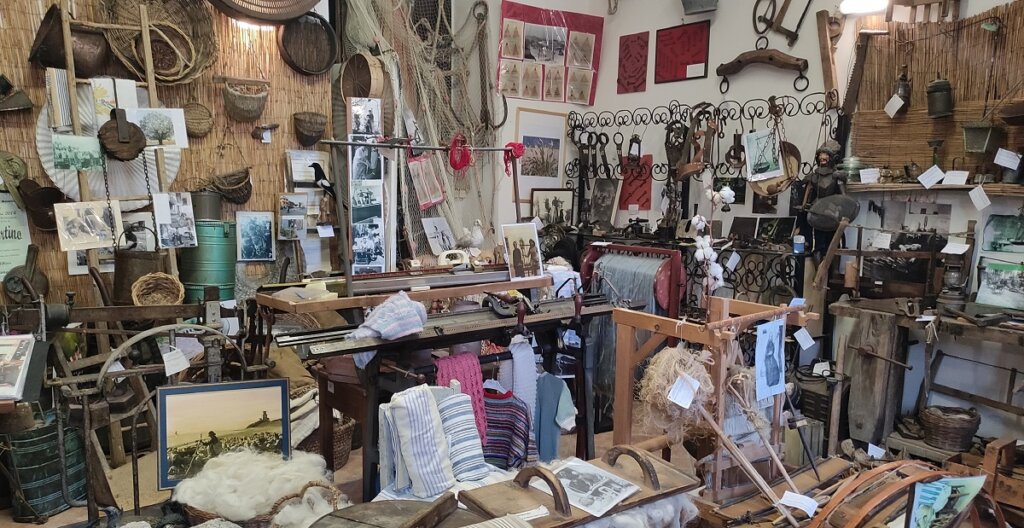
There are piles of books and photos, kitchen utensils and wooden farming tools. There are odd pieces of furniture, and prams and cots and even a full-sized bed, complete with bed linen and … a prete.
A priest?
That’s right, but not a man of the cloth – a bed warmer. The name was used for a wooden frame which created a kind of tent in the bedclothes and into which was inserted a pan of hot coals.
It’s a puzzling name for the predecessor of the hot water bottle. The only explanation I can find is a coy reference to the rumour that priests used to introduce themselves into other people’s beds. Even more disconcerting is the fact that in some parts of Italy the pan with the hot coals is called a suora, a nun.

I linger over a book entitled ‘mixed photos of a religious nature of funerals, pilgrimages etc.’. The yellowing photos inside show people in the styles of the 1920s, around the time when Montepagano was still a bustling town.
No one comes to check on us as we wander from room to room. It is only on our way out that we spot a sign inviting us to ring the bell for attention. Next time.
We blink as we emerge into the sunshine. The civic museum was a rare find, we agree, a treasure trove well worth a visit, enabling us to cast a glimpse over our shoulders at a former way of life. But it’s only a glimpse.
I feel a little frustrated that we have only touched the surface but where would you even begin to unravel such a staggering collection of artefacts?
No doubt the good people overseeing the museum could tell a tale or two.
Next time you’re there, be sure to ring the bell.
Note: the Montepagano wine festival is held during the first week in August.


